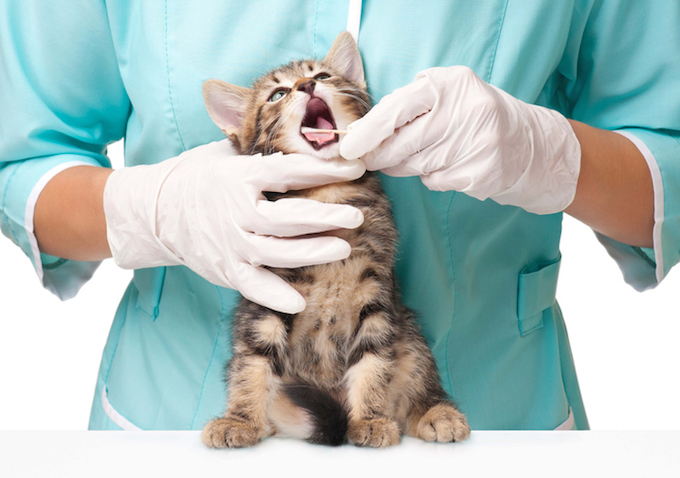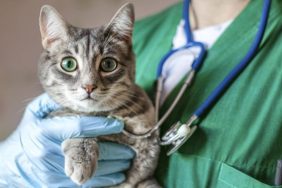Enlarged gums in cats happens when the gingival tissue in the mouth becomes inflamed. Usually, the condition is caused by bacteria and plaque.
Thankfully, the condition can usually be prevented by practicing good dental hygiene.
Technically, the condition is also known as gingival hyperplasia in cats. Also, you can learn more about gingivitis in cats in general here.
If you see the signs of enlarged gums in your cat, then get to a veterinarian for a proper diagnosis and treatment.
Here’s what you should know about the symptoms, causes, and treatments for the condition.
Symptoms of Enlarged Gums in Cats
The condition produces a range of symptoms. For instance, some of the most common symptoms include:
- Inflamed gums
- Gums getting thicker
- Drooling
- Growths on the gum line
- Pockets forming in the gums
- Pus (around the teeth)
- Acting irritable
Causes of Enlarged Gums in Cats

The cause of the condition is usually bacteria and plaque. Additionally, the following factors can be causes of the condition:
- Poor dental hygiene
- Poor diet
- Age
- Disease
- Breed
Treatments for Enlarged Gums in Cats
Firstly, your vet will ask about your cat’s symptoms. Secondly, your vet will ask about your cat’s full medical history. This will include breed-specific problems.
Thirdly, a full examination of your cat’s mouth will be carried out. Additionally, X-rays can be used to confirm the condition. Also, a biopsy will be taken of any growths in the mouth.
Generally, treatment usually begins with a deep cleaning of your cat’s teeth and gums. Also, pain medication is usually prescribed.
As always, if your vet prescribes your cat any medicine, make sure to stick to the correct dose and frequency instructions. Also, complete the full course of medicine.
Additionally, in more severe cases a surgery may be suggested. This will correct your cat’s gum line.
Ultimately, remember that prevention is better than cure with this condition. You can read more about good dental hygiene for your cat here!
Have you ever cared for a cat who suffered from this condition? How did your vet help your cat recover? Let us know in the comments section below.









